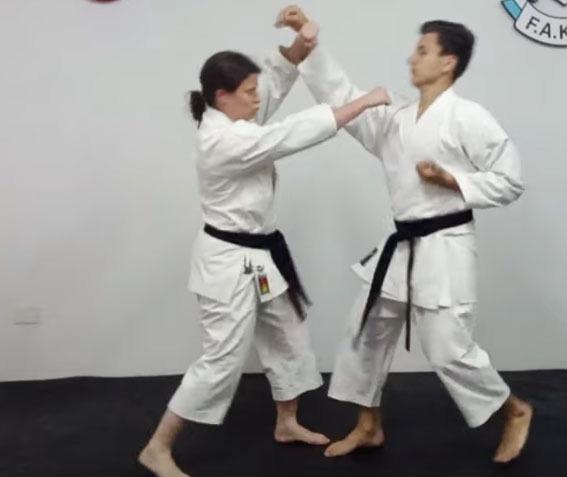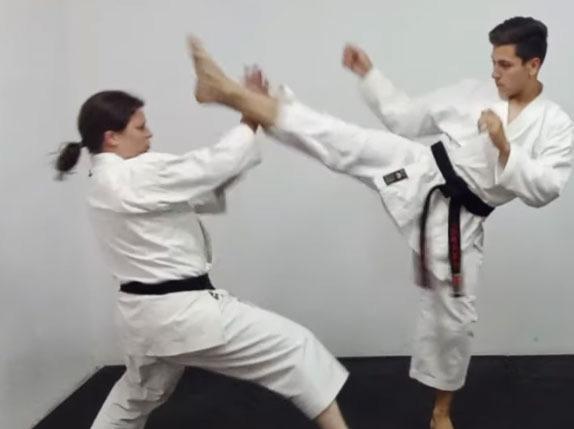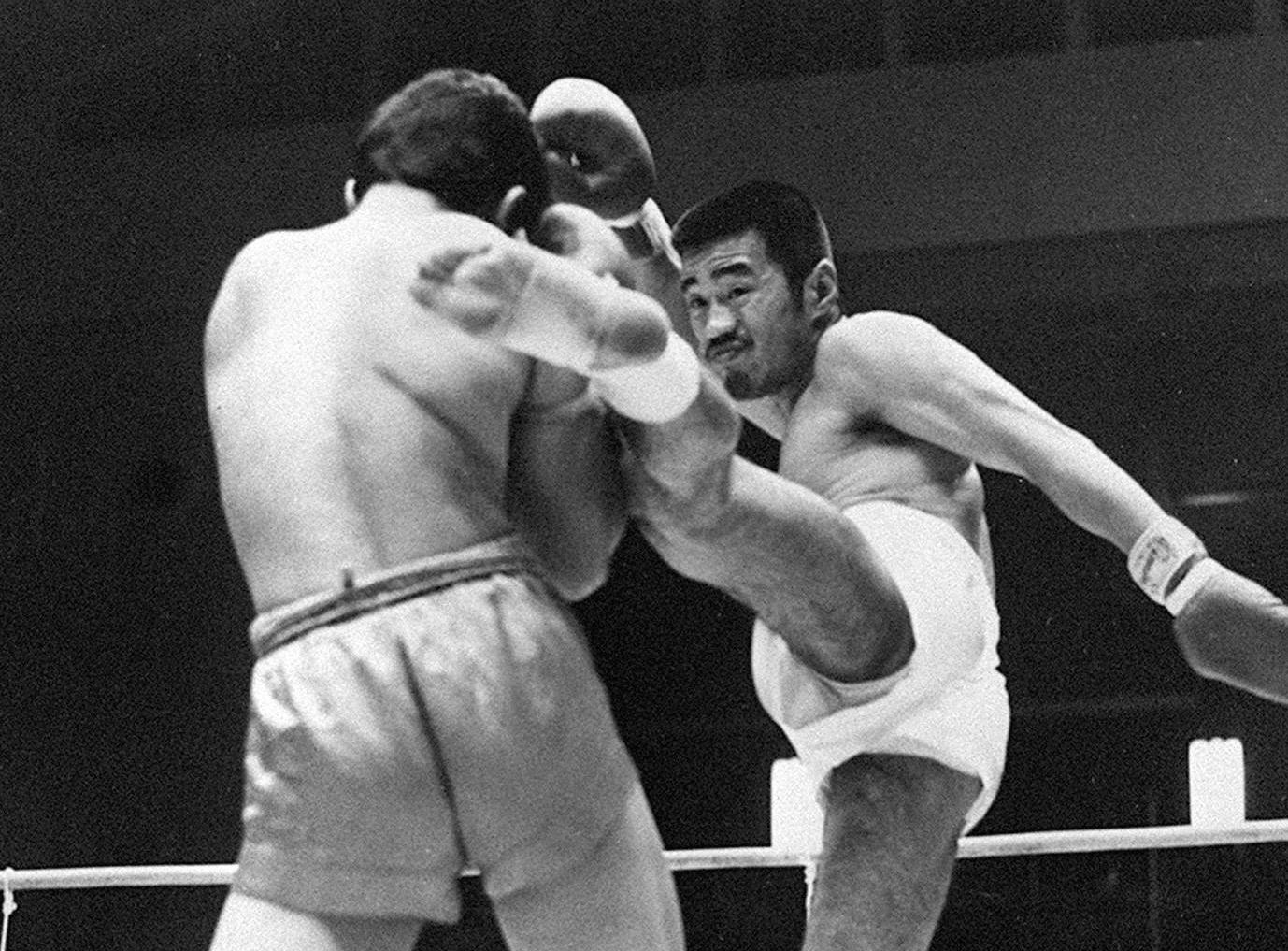
5 minute read
TRAINING METHODS SENSEI Cecilia Salbuchi
Sensei Cecilia Salbuchi
Advertisement
It is known that all martial arts are for self-defense, but for a matter of methodology, different levels of bunkai (analysis) are not always taught in the ways we train. Perhaps it is to reinforce a technically correct attack by uke, where a neat attack is requested, usually a chudan tsuki that starts from a guard or ready position and after being announced first moves the base to finish in the attack technique. We strongly emphasize this type of attack because we want both the attacker and the defending player to be able to hone their technique. But this instance must apply to when our students are at an initial level. So how do we take them to the next level? Level 2: Intermediate Once the student is already "soaked" in the subject, mastering several bunkai and exercises (let's say brown belt) we can move on to the next instance. It's not enough to develop sophisticated variants of bunkai, with beautiful locks and throws... what we need to change is the attack! Attacks with shomen/mae geri, mawashi or yoko geri come into play here, fast combinations of tsuki that are more like a real combat (even with a return to automatic kamae, no leaving your partner's arm!). We need to make the exercise more spontaneous and less collaborative, otherwise we will stagnate in an exercise that does not pressure our reaction capacity. In this instance it is very necessary to maintain the highest possible technical level when executing the analysis, trying to respect the trajectories, the order of the movements, and if possible the turns and displacements. Regarding the latter, we have to understand that the displacement of a segment or unit of the kata will not be the same when we have to defend a tsuki, as when we need to use the same part to defend a keri. The first thing that becomes more flexible is precisely this issue. Level 3: Advanced One of the biggest fallacies in martial arts is to practice our defenses against basic martial arts attacks: a tsuki, a grab that is not followed by a punch, a kick executed under our technical principles. So for our kata to be effective as self defense we need to change the attack. A good exercise for the group is to make together, using a blackboard, a list of frequent attacks on the street. You can even make a selection of YouTube videos of bar fights, robberies that get out of control, fights after a car crash, etc. Together, observe and extract what the initial attacks were, what chain of movements the attacker executes, balance of the attacker's body, etc. Now with this list, let's locate the segments of our kata that we want to analyze and try to apply all the attacks to each part. Depending on the form and style, the defenses will not always fit well for some attacks, but it is necessary to experience for oneself the complications that arise. Here it is important to allow flexibility in changing the order of techniques and changes in displacement. The priority is lateral thinking (think out of the box), where we will discover that several movements have more than one reading. A block is a lock, is a blow, is a throw… You will see that today there are hundreds of masters on YouTube showing off their bunkai and its
immense variety. Some more realistic, others more tending to the show. I do not discredit anyone. The realists are rougher and are necessary for our combat ability to level up. And those that seem to be a show develop other less frequent skills in karate, such as complex locks, projections, etc. A teaching method that I heard from Jesse Enkamp (the Karate Nerd) and appropriated for my classes is to take each block first as a block, then as a lock, then as a strike, and finally as a throw or takedown. Uechi Ryu, the style I practice, has a limited variety of native locks, with most being circular (in and out) and very few straight. We have to subject each block to this idea: use it as a block, as a key, as a blow and as a takedown. In that order.
And once we can do this work, which is very entertaining and challenging, follow the same path but with the punches: Every punch is a block or a deflection, and immediately afterwards the punch also serves to throw, and can serve to close a wrench or torque. If we get this far then we can really say that we are scholars of karate.
Let's keep practising!





HISTORIA DEL KICKBOXING EN JAPÓN, DEL MUAY THAI AL K-1. Este libro supone la primera publicación en occidente de una obra dedicada en exclusiva a la narración de la apasionante historia del kickboxing japonés. Una crónica que comienza con las primeras interacciones entre el karate y el muay thai, y que nos lleva a revivir la épica de los primeros desafíos entre ambos estilos. El kickboxing fue el resultado de la importación y adaptación del muay thai a Japón, realizada por el promotor Osamu Noguchi en los años 60. En el presente trabajo, descubriremos los antecedentes, el nacimiento, y las diferentes fases de crecimiento y evolución del kickboxing en el país del sol naciente. Veremos también su posterior globalización, y llegaremos hasta la última revolución del kickboxing, el lanzamiento del K-1, por el maestro Kazuyoshi Ishii, en los primeros años 90. Un vibrante relato, repleto de datos inéditos fuera de Asia, que sorprenderá, y hará cambiar al lector la percepción que hasta ahora tenía de la historia de este deporte marcial. David Leonardo Bárcena tras 10 años de recopilar exhaustivamente, la Historia del KickBoxing nos lo resume en un excelente libro autoeditado.
Puedes adquirirlo en AMAZON Detalles del producto Editorial : Independently published (18 Diciembre 2020) Idioma : Español Tapa blanda : 291 páginas ISBN-10 : 1549802879 ISBN-13 : 978-1549802874











